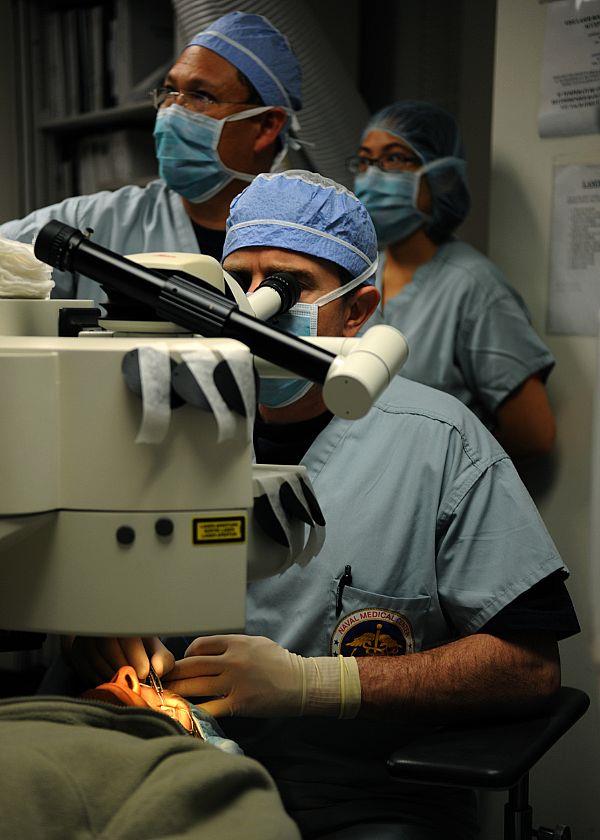Introduction
Photorefractive keratectomy also referred to as PRK, is an eye surgery that works by reshaping the front part of the eye (cornea). The cornea acts as a windshield and it focuses light passing through it on the back of the eye (the retina). Injury or disease can affect the cornea leading to loss of vision.
PRK is a type of refractive surgery that uses a laser to treat vision problems arising from refractive errors. A refractive error occurs when the cornea does not refract or bend incoming light well. In PRK, with the help of a laser, the eye surgeon changes the shape of the cornea to correct the way incoming light focuses on the retina.
PRK is suitable for patients who have:
- Dry eyes
- Thin corneas
- Active lifestyles
- Had cataract surgery and lenses put in their eyes
To be eligible for PRK, one must meet specific requirements including:
- Be in good health with a healthy cornea
- The refractive error must be one that is treatable with PRK
- The prescription should not have changed in the past 12 months
- Be 18 years or older (ideally, over 21 years old because at this age vision stops changing)
Some people are not eligible candidates for PRK including those with:
- Advanced glaucoma
- Uncontrolled diabetes
- A cataract affecting vision
- A history of a lot of scarring
- Pregnant or nursing women
- Corneal abrasions or disease
- History of certain eye infections
- An unstable (changing) refractive error
- Skin or other disorders that can affect healing
Purpose
The goal of PRK is to correct the patient’s refractive error to improve vision. It is used to treat nearsightedness (myopia), farsightedness (hyperopia) and astigmatism. The treatment may reduce the need for contact lenses or eyeglasses. One may even be able to do away with them completely.
Preparation and Expectation Before Surgery
PRK enables people to undertake most of their daily activities without corrective lenses. However, one might need to use corrective lenses for certain activities like driving at night or reading. Before the surgery, patients should discuss their vision needs and expectations for PRK with the eye surgeon.
The surgeon will conduct a thorough eye exam to ensure the patient is a candidate for PRK. The tests may involve:
- Checking the eye health.
- Measuring the pupil size.
- Checking for other eye problems – These could affect PRK or the surgery could make them worse.
- Vision test - To make sure the vision has not changed. It also checks how high the refractive error is and whether PRK is a viable treatment option.
- Measuring and mapping the surface of the cornea – He/she checks the thickness of the cornea and makes precise measurements of the surface. The surgeon programs the computer-based laser with these measurements during surgery.
Procedure
PRK takes about 15 minutes. During the process:
- The eye is numbed with eye drops
- The surgeon places an eyelid holder on the eye to keep the patient from blinking
- He/she removes the epithelium (the outer layer of cells on the cornea) using a laser, alcohol solution, special brush or blade
- The patient is asked to stare at a target light to prevent the eyes from moving. The surgeon uses a laser to reshape the cornea.
After Care, Recovery, Results
After surgery, the surgeon places a “bandage” contact lens over the eye to aid the healing process. The patient needs someone to drive them home after surgery. During recovery:
- It a good idea to take a few days off from work
- One should avoid strenuous activity for up to a week after surgery
- There may be eye pain for two to three days after PRK. Call the doctor if over-the-counter medicines do not help the pain
- One may need to use eye drop medicine for up to a month or as prescribed
- One should use sunglasses outdoors to prevent corneal scarring after surgery which may lead to vision problems
About 9 out of 10 people who undergo PRK end up with 20/40 vision or better without contacts or glasses.
Risks & Complications
PRK risks and complications may include:
- Blindness
- Corneal infection
- Scarring of the cornea
- Vision overcorrection
- Vision under correction
- Cloudiness of the cornea (corneal haze)
- Glare and halos around lights, especially at night
- Loss of best-corrected vision - Having a worse vision than before the surgery, even with contact lenses or eyeglasses


